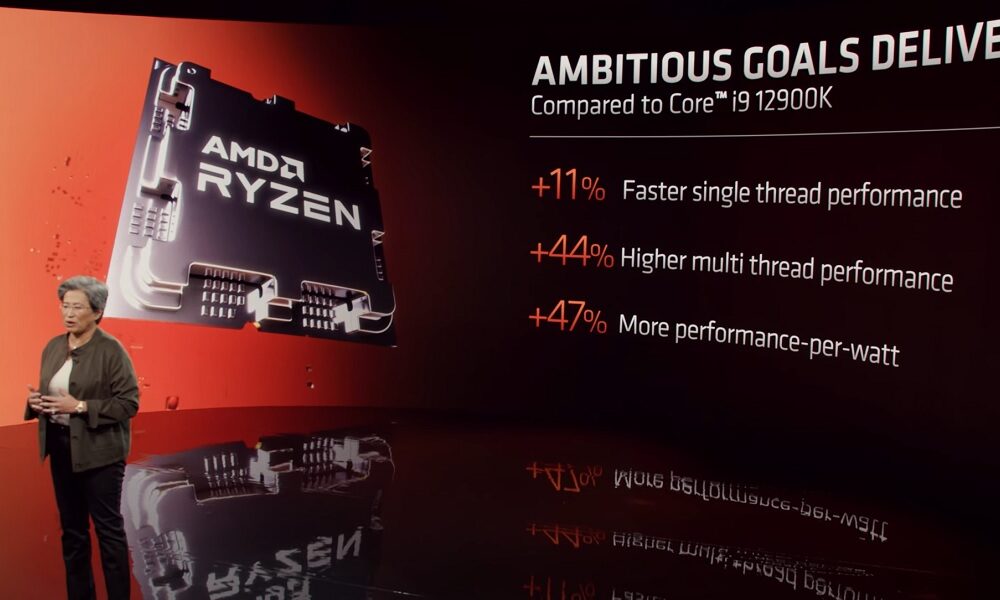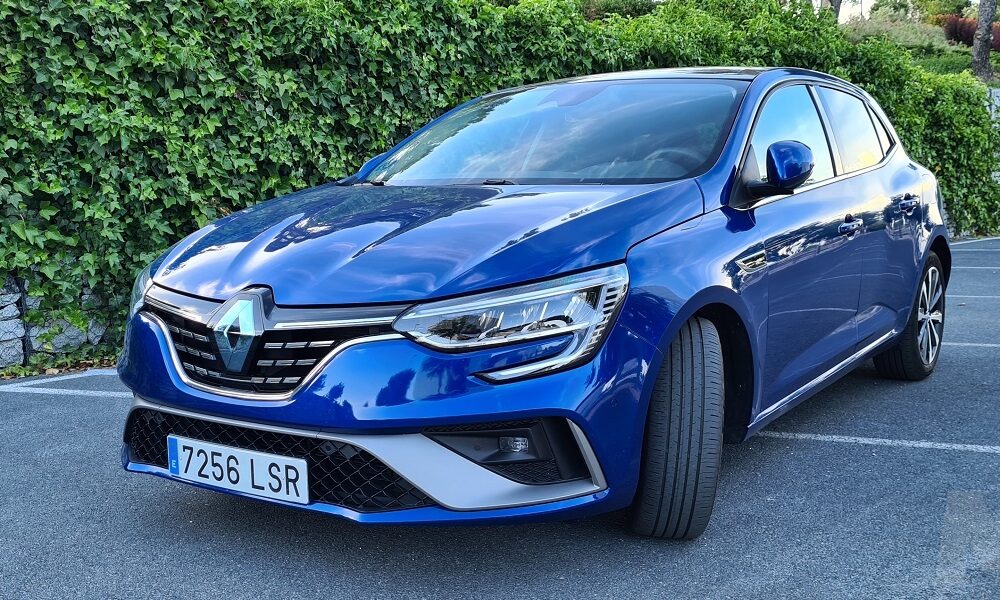
The presentation of the Ryzen 7000 allowed us to finally confirm things as important as its specifications, its launch date and its sale prices. We are also clear about what we can expect from these new processors, and in general we can safely say that AMD has done a good joband that has achieved a notable generational leap.
We have already told you the most important news of the Ryzen 7000, but there are some important details that have gone a little unnoticedor that they have not received the attention they deserve, and for this reason we wanted to delve into them by shaping this special article, where we are going to review ten “secrets” about the Ryzen 7000 processors that you must have very clear because they will help you understand now better value everything that this new generation of processors offers.
Keep in mind that everything we are going to tell you is confirmed, that is, it is official information and therefore has an “absolute” value. As always, if you have any questions you can leave them in the comments and we will help you solve them. Without further ado, let’s get down to business, make yourself comfortable, you have many interesting things to read.
1.-All Ryzen 7000 have an integrated RDNA2 GPU
AMD did not confirm it during the presentation event, but on the official website where the specifications of the Ryzen 7000 are listed we could see that in the end said component has been integrated into these processors, so the rumors that pointed in that direction have been fulfilled.
The integrated GPU that the Ryzen 7000 mounts uses a state-of-the-art architecture, RDNA2, but it has a very basic setup consisting of two compute units and 128 shaders. Therefore, they will only offer good performance in basic applications and tasks, and in old or undemanding games.
As a curiosity I remind you that said GPU it is not integrated in the CCD units, but in the I/O chipletand is therefore manufactured at the node of 6nm from TSMC.
2.-The Ryzen 7000 will consume up to 230 watts
During the presentation, a significant rise in TDP was confirmed in the most powerful models. The Ryzen 9 7900X and 7950X will have a TDP of 170 watts, but their actual consumption working at full load it will be able to reach a peak of 230 watts, It is important to keep this in mind, because if we have a fairly tight power supply, those 60 more watts can make a significant difference in terms of stability.
We will have to wait to see the actual consumption values registered by these new processors, but only based on AMD data we can already see that the Ryzen 9 7900X and Ryzen 9 7950X would be at the level of Core i9-12900Kwhich in my analysis registered a maximum peak of 226 watts at full load running at stock frequencies.
The increase in maximum consumption is due to the significant increase in work frequenciesAnd it’s totally understandable.
3.-AMD has managed to get close to 6 GHz with the Ryzen 7000
Although the Ryzen 9 7950X specifies a maximum speed of 5.7 GHz in turbo mode with a single active core (one thread), the truth is that thanks to Precision Boost Overdrive technology it can reach 5.85 GHz in specific situations. It means that AMD has approached 6 GHz.
It is a very important achievement, because AMD has gone from having problems to overcome the 5 GHz barriersomething that was impossible with the Ryzen 5000, to touch the 6 GHz. This shows that in the end the MCM design could scale to very high working frequencies, it just needed optimization and maturation to meet that goal.
The working speed of a processor is less important than the CPI of the samebut when the latter is high the former can make a noticeable difference.
4.-The Ryzen 7000 have surpassed the Core Gen12 in IPC
That’s what comes out of the performance tests published by AMD. In them we saw that the Ryzen 5 7600X outperformed the Core i9-12900K for an average 5% in games, Quite an achievement for a processor that has 6 cores and 12 threads and runs at frequencies of 4.7 GHz-5.3 GHz (turbo with one active thread).
The Core i9-12900K has a turbo mode that reaches 4.9 GHz when working with more than four active cores, a frequency that should be similar to the Ryzen 5 7600X’s turbo mode when it also has more than four active cores. Yes both run at nearly identical clock rates in games but the Ryzen 5 7600X wins for 5% the conclusion is just that, that the latter wins because it has a higher IPC.
All in all, it seems that the difference derived from the CPI falls within what we expected, that is, it is large compared to the Ryzen 5000 (13% on average) but smaller compared to the Core Gen12which means that Intel could win the game with the Raptor Lake-S.
5.-Thermal paste and Ryzen 7000: we must be careful
And this is due to the design of its IHS which, as we have seen in numerous images, adopts a very particular design known as “octopus” (octopus), due to the eight “pins” coming out of the IHS and making contact with the PCB of the processor.
This particular design of the IHS will force us to apply the thermal paste more carefully, both due to its distribution and quantity. If we apply a lot of it, it will end up falling off the sides and it may stain capacitors.
I believe that the classic formula of applying a small ball the size of a pea, or a little smaller, in the center It will once again be “the old reliable” to apply thermal paste correctly in the new Ryzen 7000. In any case, we must be cautious, since cleaning an excess of thermal paste is a real nuisance.
6.-AMD has used solder and liquid metal in the Ryzen 7000
When the first “delid” of a Ryzen 7000 was leaked we were able to confirm that AMD has reverted to using solder and liquid metalwhich means that the company has taken the utmost care in the construction of its new processors, and that we can expect high thermal conductivity.
This is very important because it plays a key role in heat dissipation, and in the end has a considerable impact on maximum processor temperaturesto such an extent that using low-quality materials can end up making it impossible to control CPU temperatures even if we use a high-power cooling system.
In this regard, it is important to remember that the gold plating on the CCD units helps improve heat transfer, and allows indium to be soldered directly without using a flux, and without resorting to harsh chemicals.
7.-The “octopus” design has allowed to maintain compatibility with AM4 heatsinks
It is one of the most important things that has been confirmed in the “delid” that Gamer Nexus recently did. In order to maintain compatibility with AM4 socket coolers at AMD they had to face a very difficult challenge, keep all capacitors and resistors on the rear face of the processornext to the CCD units and the I/O chip.
That has been possible thanks to the IHS with that “octopus” finish, which has also made possible achieve the ideal surface in order to maintain compatibility with all AM4 cooling systems without having to make any sacrifices. It has not been a whim of AMD, this design has a very important functional role, as we see.
You will not need any adapter to reuse an AM4 cooler on an AM5 motherboard, so don’t worry.
8.-The increase in frequencies in multicore will also be large
And it will contribute to greatly improve the performance compared to the previous generation. We have already told you that a Ryzen 9 5950X has a turbo mode of 4.9 GHz with an active core, and that the Ryzen 9 7950X can reach 5.85 GHz, which implies an increase of almost 1 GHzimpressive considering that we are talking about a change between two generations.
The fact is that the values in turbo mode will also greatly exceed those recorded by the Ryzen 5000. In this sense, it must be remembered that the Ryzen 9 5950X remains at 4.45 GHz with all cores and threads active, and which is likely to the Ryzen 9 7950X already maintains 4.5 GHz in base mode, so it is very likely that it can work without problem in the 5 GHz range also with all its cores and threads active.
Thanks to this significant increase in clock frequencies, AMD has achieved trigger single thread performancebut it has also done the same in multithreading, since the differences are substantial compared to the current generation.
9.-We will need a more powerful cooling system
And this will be a direct consequence of this increase in maximum consumption, which will reach 230 watts, Like we have already said. Obviously the more consumption, the more heat generatedand to counteract it we will need higher power heatsinks.
For us to understand each other, nothing better than making a direct and simple comparison. The Ryzen 9 7950X will consume up to 230 watts, while the Ryzen 9 5950X registers a consumption of 141 watts (183 watts with PBO). The difference is substantial, and it alone explains why we say we’re going to need a more powerful cooling system to keep the new high-end Ryzen 7000 under control.
If you are wondering what exactly you are going to need, I can already tell you that you can rest easy, because any AIO liquid cooling kit with three fans should be more than enough to keep a Ryzen 9 7950X cool.
10.-The CCD unit is smaller, but has more transistors
The Ryzen 7000 have made the leap to TSMC’s 5nm node in their CCD units, which are the ones that house the CPU cores and caches. Thanks to this the size of the transistors has been reduced and the rest of the elements present at the silicon level, and its impact at the wafer level has also been reduced.
A CCD based on Zen 4 occupies an area of 70 mm2, while a CCD based on Zen 3 occupies 83 mm2. The difference is considerable, but the most impressive thing is that despite this reduction in size, AMD it has increased the density of transistors by 58%.
The Ryzen 7000 CCD unit houses 6.57 billion transistorswhile the Ryzen 5000’s CCD unit has 4.15 billion transistors.













